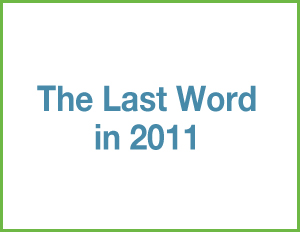The Last Word in 2011

Thanks to The Agitator for letting me have the last word in 2011. Tom Belford and Roger Craver’s daily e-newsletter and blog are the first thing that I read each day. I have a lot of respect for them and their expertise in the nonprofit sector.
It’s an honor that they decided to pick a comment that I posted in response to this article about online fundraising. There’s a lot of talk about who gets credit for online giving and what really is online fundraising — but what it all boils down to is a silo problem. Resolved: No Fundraising Silos.
Here’s the comment:
“Is it channel conflict or cognitive dissonance? It is sometimes very hard to tell.
There is way too much philosophical debate on which channel should get the credit for the gift. This is mostly fueled by organizational silos or incentives that nonprofits have put in place.
Here’s the reality: Donors are multichannel. They receive messages across multiple channels and they give across multiple channels. They don’t care about your org chart or who gets credit for the donation.
The problem is that many nonprofits are still organized around single channels — each doing their own thing, with their own strategies, their own data, their own donors, and their own systems. That’s broken and really costly.
Ultimately, you want to use the right number of channels to drive the right people to take the right action using the most effective and satisfying giving mechanism as possible.
If that means a direct mail piece and a check, then great! If that means a phone call and an online donation, then fantastic. If that is a tweet, an email, a QR code, a website, and a donation form, then so be it.
And if you’re looking at donor behavior across channels, then you will begin to see some trends in what channel mix works best for different types of donors. Oh yeah, did I mention that donors don’t all respond the same way to the same channels? One size fits all approaches are as doomed as single channel tactics.
Statistically speaking, online donors are much more likely to switch to become offline donors. About 32% of online donors will become offline donors compared to only about 3% of offline donors switching channels. Your results may very. Always be testing.
No one channel should get all the credit or all the blame. You succeed or fail based on how well you do these things together.”
Thanks again Roger and Tom. Let’s put an end to silos in 2012.
P.S. Earlier this year, I posted the article “5 Questions for Roger Craver” — it’s worth a second look.
